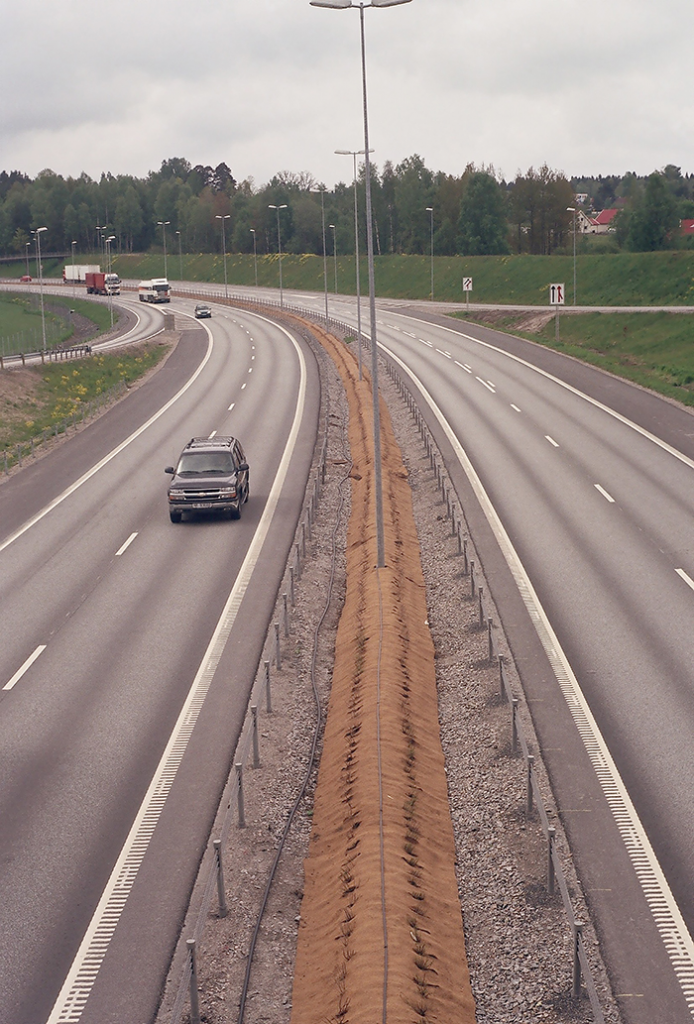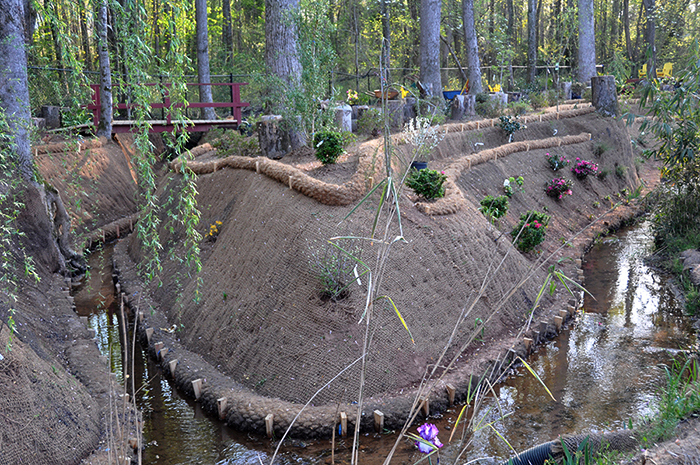
Uncontrolled runoff and sediment can quickly turn a stable slope into an environmental hazard. Whether you’re dealing with a highway embankment or a backyard hillside, managing water flow is critical. That’s where coir logs, like BioD-Roll, densely packed coir logs, come in. These all-natural erosion control tools act as physical filters—trapping sediment, slowing water, and protecting the landscape without synthetic materials.
Why Coir Logs?
Made from tightly packed bristle coir fiber, coir logs are strong, durable, and completely biodegradable. They’re particularly effective in high-flow zones, offering a natural way to control erosion and support plant growth. Unlike synthetic options, they won’t harm local ecosystems and eventually break down into beneficial organic matter.
BioD-Roll is ideal for use in:
- Streambank restoration
- Shoreline restoration
- Channel restoration
- Soil sediment control
- Soil erosion control
Their design makes them suitable for both environmental restoration and infrastructure support, including stormwater runoff management near roads and construction zones.
Step 1: Identify Risk Areas
The first step in sediment control is pinpointing where runoff causes problems. You might notice pooling water, eroded gullies, or exposed roots. These warning signs commonly appear:
- Along roadways and highways
- On steep or newly graded slopes
- Around drainage channels and culverts
- Near lakes, streams, or shorelines
In wetland restoration or mine restoration zones, coir logs help reduce soil displacement while supporting habitat recovery.

Step 2: Choose and Position the Right Product
For sediment-heavy or high-flow areas, BioD-Roll offers excellent structure and filtration. Its density allows it to stay in place during storms while filtering sediment from moving water.
Install coir logs:
- Along the slope contour to slow sheet flow
- At the base of hillsides or embankments to intercept runoff
- Along shorelines or streambanks to reduce wave energy
- Around the construction site perimeters for temporary control
Proper placement is crucial—logs should follow the land’s contour to intercept and redirect water flow naturally.
Step 3: Installation Tips
Installing coir logs is straightforward:
- Clear the ground of debris and vegetation.
- Dig a shallow trench, especially if installing on a slope.
- Place the log snugly in the trench and stake securely using biodegradable stakes or coir hop twine.
- If using multiple logs, overlap ends and fasten them tightly.
For extended protection, consider pairing BioD-Roll with other products like BioD-Mat woven bristle coir blankets or BioD-Block fabric-attached coir blocks, depending on the site’s severity and layout.
Step 4: Maintain and Monitor
After installation, inspect regularly, especially after heavy rain. Ensure the logs haven’t shifted or become dislodged. Over time, they will biodegrade, enriching the soil and encouraging native plant growth.
Rolanka: Natural Sediment Control You Can Trust
Rolanka International, Inc. has been at the forefront of natural erosion and sediment control since 1993. Their BioD-Roll densely packed coir logs are trusted across industries for shoreline protection, slope stabilization, and water filtration. With an emphasis on quality, technical support, and environmental responsibility, Rolanka helps you protect the land safely and effectively.
Protect your project from erosion, the sustainable way—choose Rolanka’s coir logs and do it right the first time. Get in touch today to get started.
